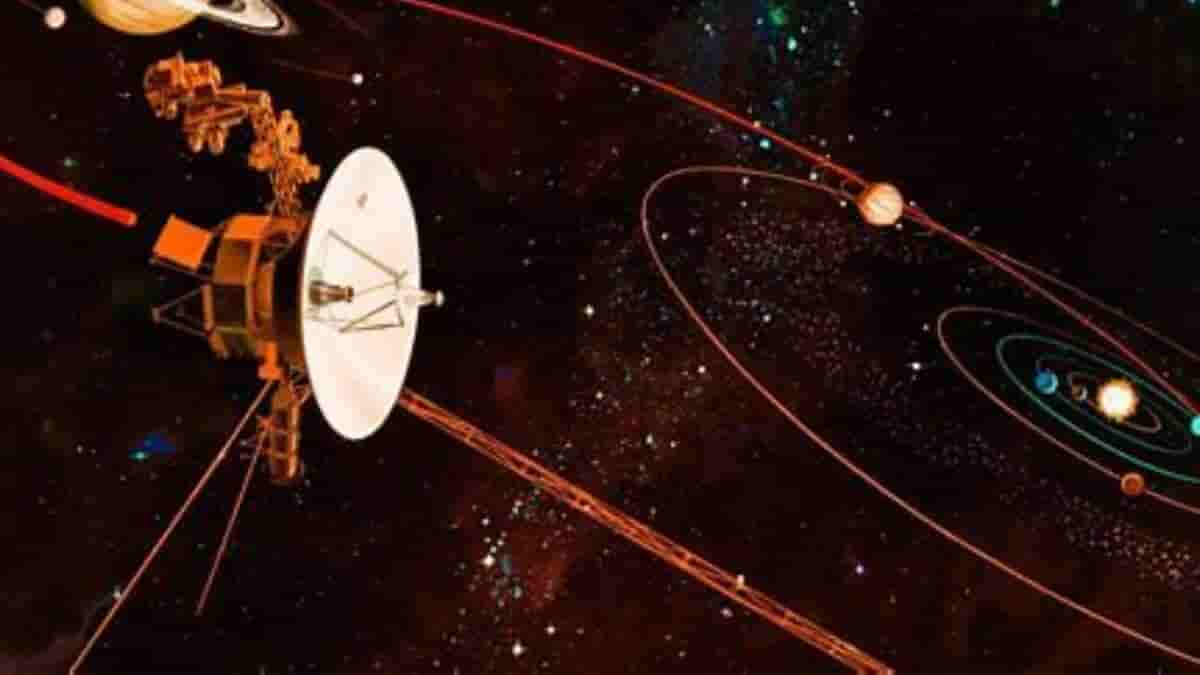NASA’s Voyager completes its 45 years in space

The year is 1977. Jimmy Carter, the new president of the United States, takes the oath of office. Brazilian soccer player Pele competes in his farewell game in Japan. In Star Wars Episode IV: A New Hope, lightsabers and droids excite viewers. NASA will put Voyager 2 into orbit on August 20. Voyager 1 swiftly follows its identical probe on September 5, 1977.
The Voyager probes are still at the forefront of space exploration since they are the only ones that have ever probed interstellar space or the cosmic ocean that our sun and its planets sail through. The heliosphere makes it more challenging to understand the sun and its planets. The heliosphere, a protective bubble, is created by the interaction of the sun’s magnetic field and solar wind, or the outflow of charged particles from the sun.
A kind of intergalactic time capsule, the Voyager probes are beginning their 45th year of interplanetary service. According to NASA, each of them stores data on an eight-track tape recorder has about three million times less memory than modern cellphones, and transmits data at a rate that is about 38,000 times slower than a modern 5G internet connection.
The Voyager probes’ observations are being combined with information from more recent space exploration missions, according to NASA, in order to create a more complete PICTURE OF OUR SUN and how the heliosphere interacts with interstellar space. Some of NASA’s researchers are now younger than the Voyager probes themselves.
The heliophysics mission fleet offers priceless insights into our Sun, from understanding the corona or the outermost part of the Sun’s atmosphere to examining the Sun’s impacts throughout the solar system, including here on Earth, in our atmosphere, and on into interstellar space, according to a press release from Nicola Fox, director of the Heliophysics Division at NASA Headquarters in Washington. The Voyager missions have revolutionized our understanding of the Sun and its influence in ways that no other spacecraft can, and they have been instrumental in providing this knowledge over the past 45 years.
Jupiter, Saturn, Uranus, and Neptune are the four giant planets in the outer solar system that have been investigated by Voyager 1 and 2, together with 48 of their moons and each planet’s unique ring and magnetic field systems. In the event that they come across extraterrestrial life, the Voyager spacecraft is outfitted with a message.
A 12-inch gold-plated copper disc used in phonographs is loaded with recordings of sounds and sights that “portray the diversity of life and culture on earth.” 115 images, a range of natural sounds (including humpback whale melodies and calls), music from diverse cultures, and greetings in 55 different languages from Earthlings were selected by a Cornell University team led by the late Carl Sagan.
By April 2020, Voyager 1 will still be traveling toward its goal of exploring the furthest reaches of the cosmos; it is presently 13.9 billion miles away.
We’re turning 45!
To kick off the celebration of this milestone, our project manager will be talking to you all live on Aug. 18 to answer questions about our decades-long mission. Tune in at 7 pm PT (10 pm ET) and leave your questions in the comments. https://t.co/PgvE5a4gYD— NASA Voyager (@NASAVoyager) August 17, 2022


